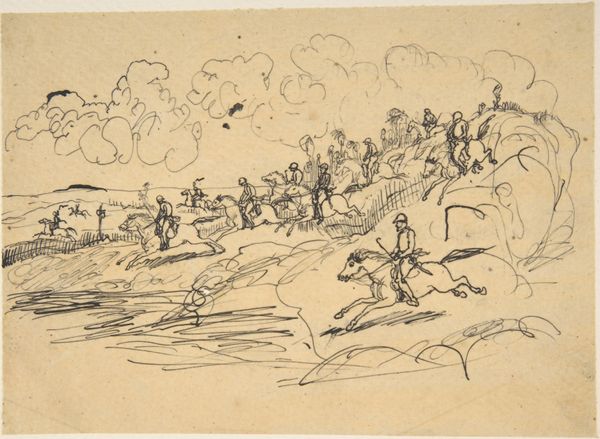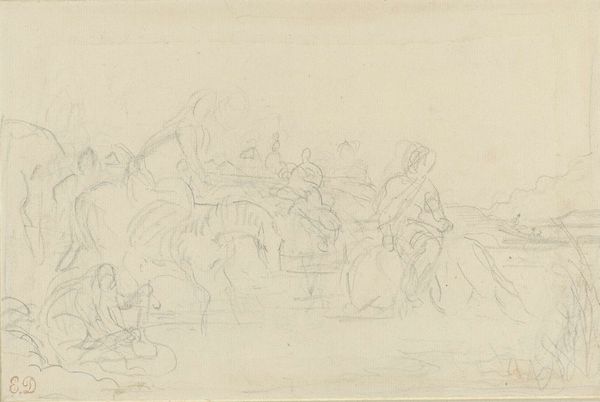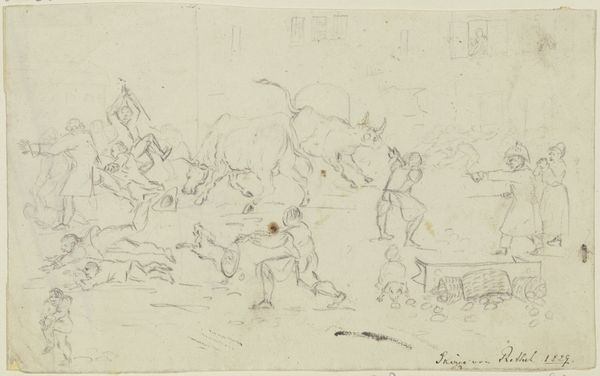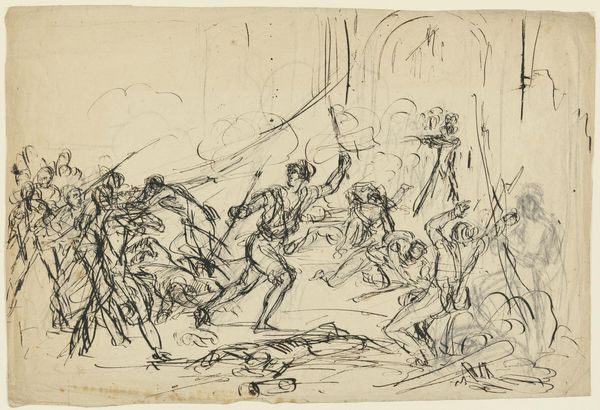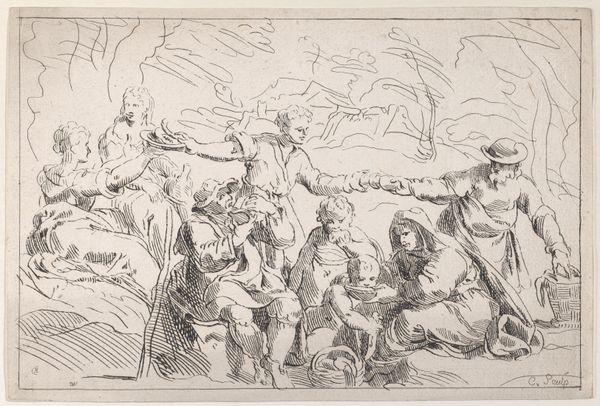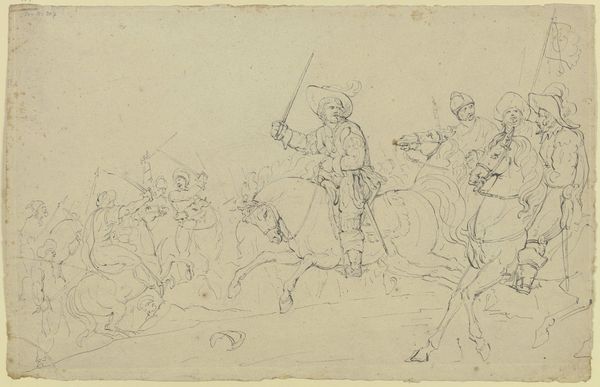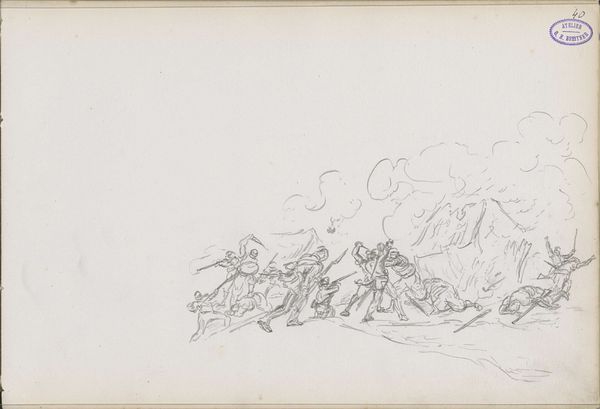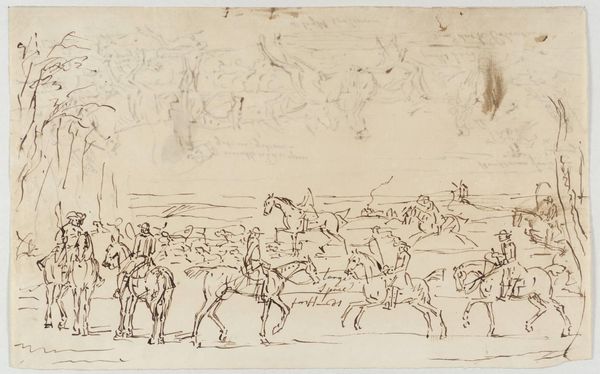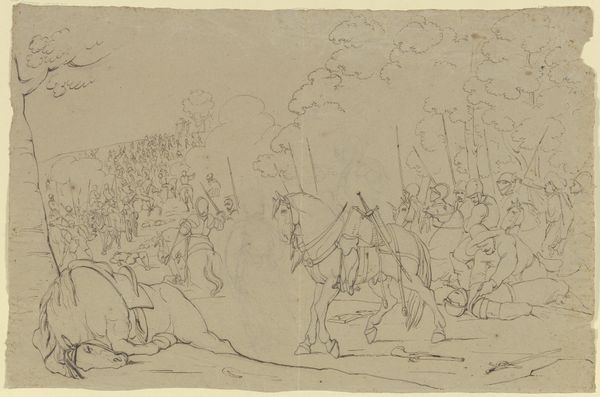
Dimensions: overall: 20.7 x 34.6 cm (8 1/8 x 13 5/8 in.)
Copyright: National Gallery of Art: CC0 1.0
Curator: Well, hello there. Before us is a quick sketch really, "Sandstorm in the Desert Overtaking a Caravan" by Johann Zoffany. It’s done in pen and ink, dating roughly from 1783 to 1789. It feels incredibly immediate, doesn't it? Editor: Immediate is right! Chaotic too. You get the sense of desperate movement, horses and people tumbling forward, swallowed by a swirling, angry sky. There's a definite Romantic sensibility here, a drama playing out between humankind and the vast indifference of nature. Curator: Absolutely. And that romantic sensibility comes at a very specific point in time and really needs to be read against a certain set of assumptions. The late 18th century saw this surge in orientalist depictions in art, and it was, in many cases, a vehicle to express power. Nature is this untameable force that is able to bring even caravans, which stand as emblems of organized systems, to their knees. There's power, but also anxiety there. Editor: I see your point about the anxiety, but also notice how, even in this near-scribble, Zoffany finds a certain beauty. Look at the way the light plays off the hinted figures, their garments. They become part of this textured landscape, not quite defeated. I wonder, was this done on location, or back in his studio in London? Curator: Most likely, in the studio. Zoffany made his name with his society portraits, but he definitely used works like this to try to establish himself in the more “serious” genre of history painting. These history paintings were vehicles for projecting cultural superiority, often, because of who the market audience was back in Europe. Editor: Interesting, because for me it has such an atmospheric charge. I almost don’t need the figures—it's the sense of elemental struggle that speaks volumes. Maybe its lack of detail heightens that feeling, you know? Curator: Possibly so. Ultimately, to experience this artwork in its time meant something much different than to appreciate the aesthetic pleasure, if we can even say it like that today. Context is everything. Editor: Yes, context shifts everything, doesn't it? Although the whirlwind endures… Curator: True that. We could spend hours dissecting this little scene, really. It speaks to so much. Editor: Exactly. Maybe a return trip is in order.
Comments
No comments
Be the first to comment and join the conversation on the ultimate creative platform.
